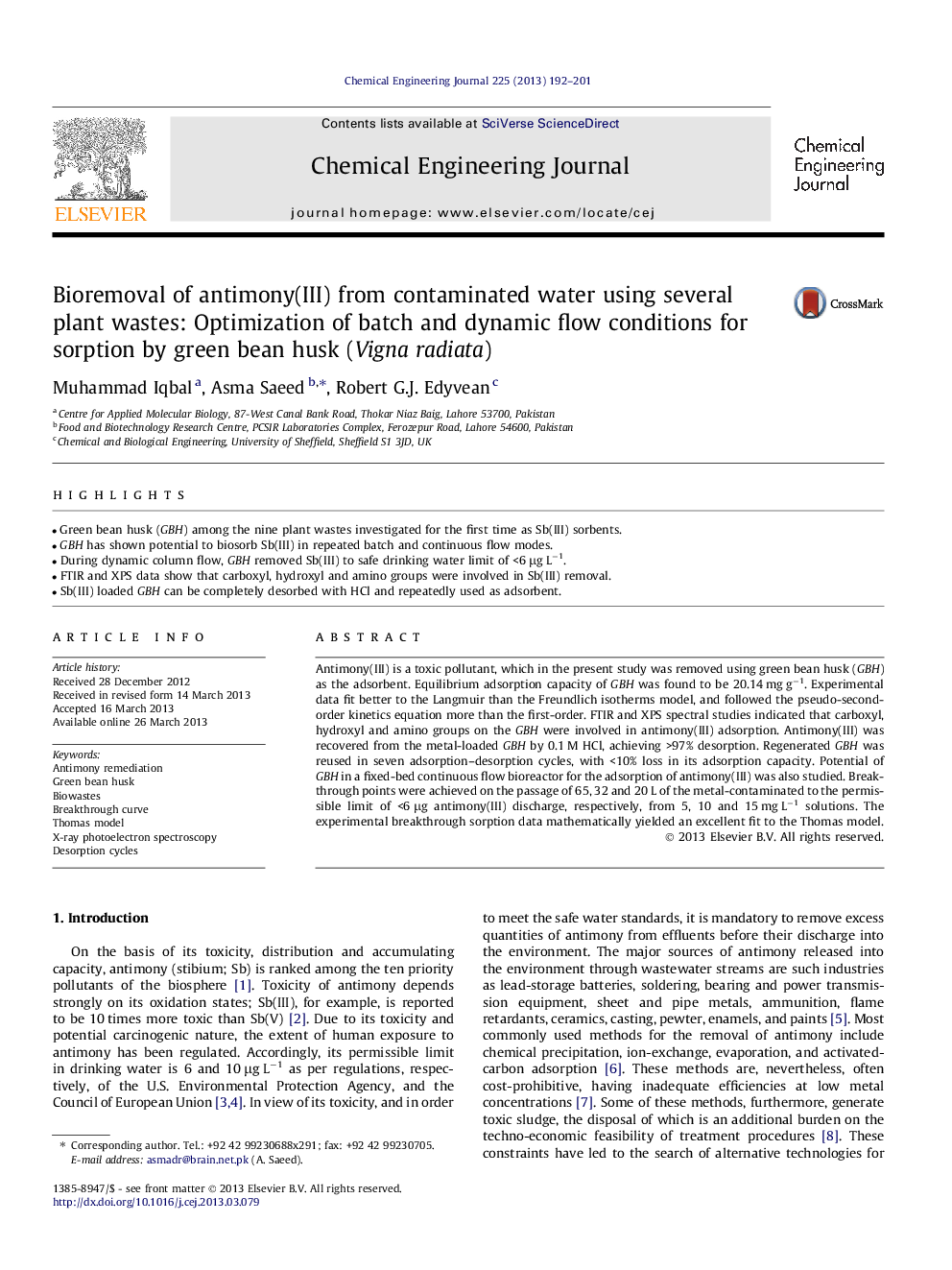| Article ID | Journal | Published Year | Pages | File Type |
|---|---|---|---|---|
| 148672 | Chemical Engineering Journal | 2013 | 10 Pages |
•Green bean husk (GBH) among the nine plant wastes investigated for the first time as Sb(III) sorbents.•GBH has shown potential to biosorb Sb(III) in repeated batch and continuous flow modes.•During dynamic column flow, GBH removed Sb(III) to safe drinking water limit of <6 μg L−1.•FTIR and XPS data show that carboxyl, hydroxyl and amino groups were involved in Sb(III) removal.•Sb(III) loaded GBH can be completely desorbed with HCl and repeatedly used as adsorbent.
Antimony(III) is a toxic pollutant, which in the present study was removed using green bean husk (GBH) as the adsorbent. Equilibrium adsorption capacity of GBH was found to be 20.14 mg g−1. Experimental data fit better to the Langmuir than the Freundlich isotherms model, and followed the pseudo-second-order kinetics equation more than the first-order. FTIR and XPS spectral studies indicated that carboxyl, hydroxyl and amino groups on the GBH were involved in antimony(III) adsorption. Antimony(III) was recovered from the metal-loaded GBH by 0.1 M HCl, achieving >97% desorption. Regenerated GBH was reused in seven adsorption–desorption cycles, with <10% loss in its adsorption capacity. Potential of GBH in a fixed-bed continuous flow bioreactor for the adsorption of antimony(III) was also studied. Breakthrough points were achieved on the passage of 65, 32 and 20 L of the metal-contaminated to the permissible limit of <6 μg antimony(III) discharge, respectively, from 5, 10 and 15 mg L−1 solutions. The experimental breakthrough sorption data mathematically yielded an excellent fit to the Thomas model.
